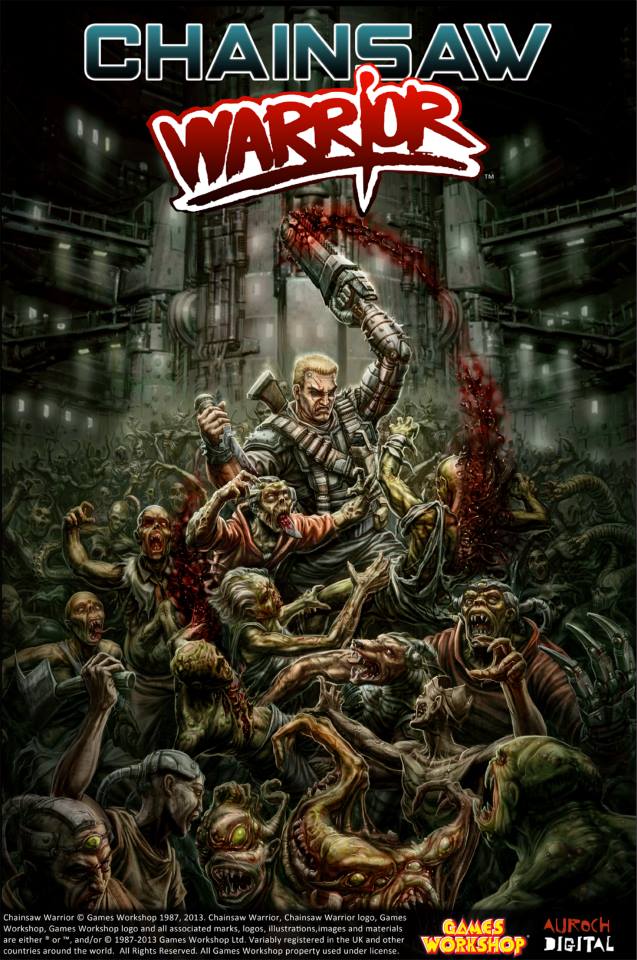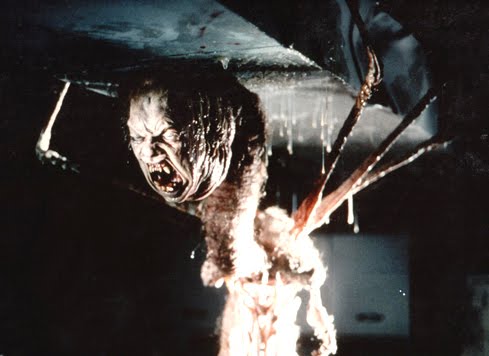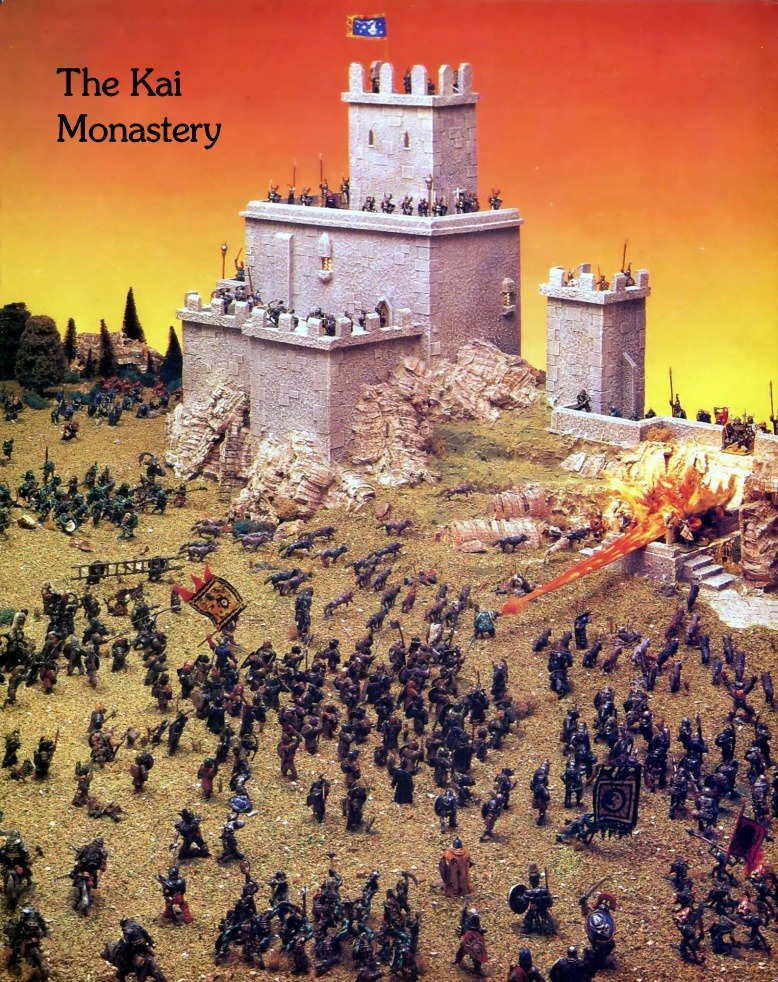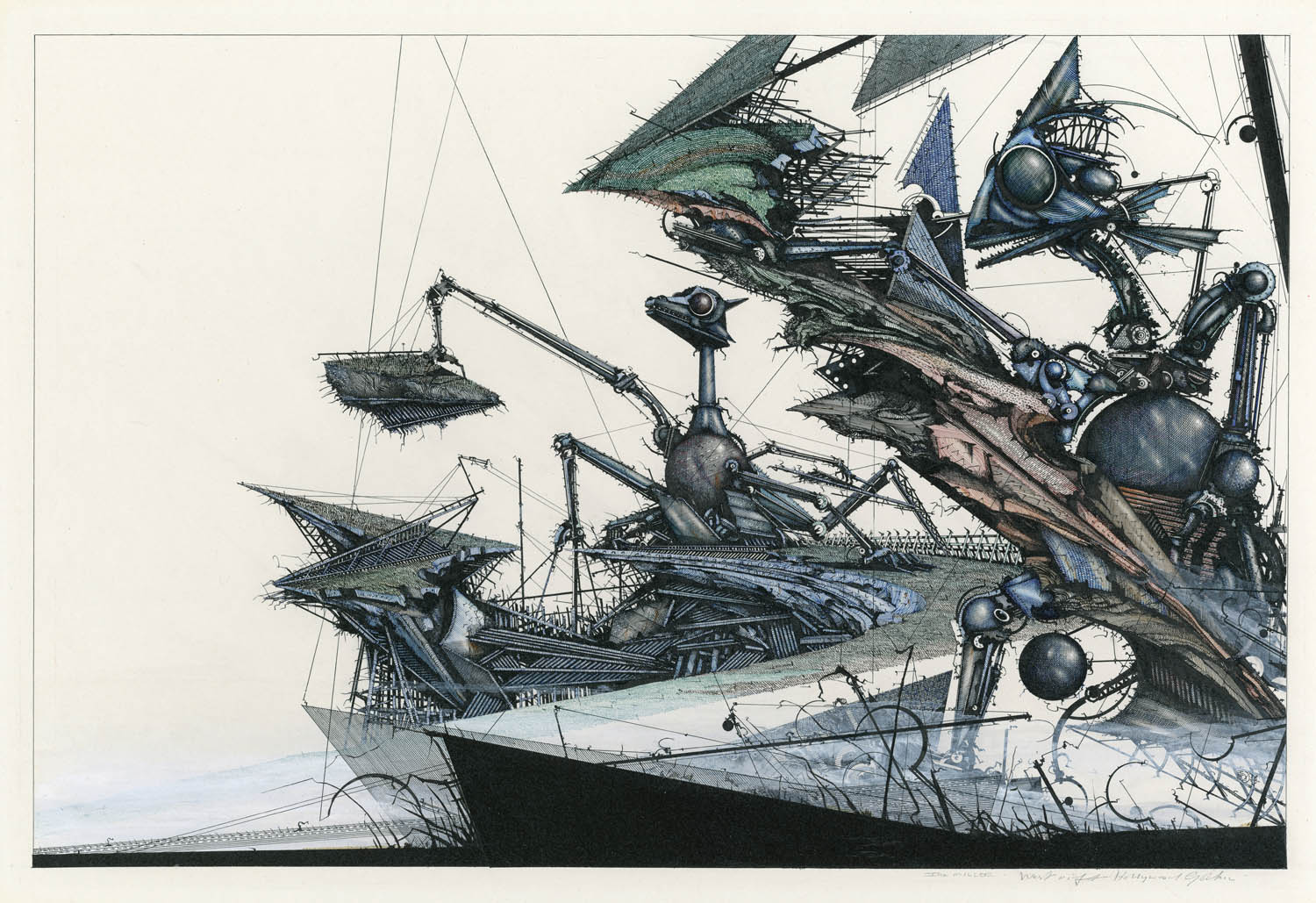The Aridáni Legion of Lady Mríssa
The Lady Mrissa is a young Noblewoman from the City of Geniana, The Aridáni Legion form her personal honour guard as well as fulfilling various stately duties throughout the city. Called to arms by Lady Mrissa for special missions, famed for their heroic and profitable raids on the corrupt Sea Elf temple of Wohn-gar, and as a welcoming committee for the Norse raiding party led by Sonny Ericssonson.The armour of the Aridáni Legion of Lady Mríssa is made of especially cured and treated Cold One skin, decorated with gold.
 |
| Aridáni Karéng of Lady Merissa | John Winter | Tekumel Project |
| Name | M | WS | BS | S | T | W | I | A | Ld | Int | Cl | Wp | Weapon 1 | Weapon 2 | Armour | PV |
| Lady Mrissa (Kérdu) | 4 | 6 | 6 | 4 | 4 | 3 | 6 | 3 | 9 | 9 | 9 | 9 | Sword | None | Chestplate & Shield | 52.5 |
| Karéng | 4 | 5 | 5 | 4 | 4 | 2 | 5 | 3 | 8 | 8 | 8 | 8 | Sword | None | Chestplate & Shield | 36.5 |
| Semétl | 4 | 4 | 4 | 4 | 3 | 1 | 4 | 1 | 7 | 7 | 7 | 7 | Sword | None | Chestplate & Shield | 10.5 |
| Káing (standard) | 4 | 3 | 3 | 3 | 3 | 1 | 4 | 1 | 8 | 7 | 7 | 7 | Sword | None | Chestplate & Shield | 7 |
| Musician | 4 | 3 | 3 | 3 | 3 | 1 | 3 | 1 | 7 | 7 | 7 | 7 | Sword | None | Chestplate & Shield | 6.5 |
| Troop | 4 | 4 | 3 | 4 | 3 | 1 | 4 | 1 | 7 | 7 | 7 | 7 | Pike | Sword | Chestplate & Shield | 9.25 |
 |
| Kérdu - Lady Merissa | John Winter | Tekumel Project |
 |
| Legion Trooper | John Winter | Tekumel Project |
The Legion of the Sapphire Kirtle
| Priestess Dijáya | Kérdu of the Sapphire Kirtle | John Winter | Tekumel Project |
| Name | M | WS | BS | S | T | W | I | A | Ld | Int | Cl | Wp | Weapon 1 | Weapon 2 | Armour | PV |
| Lady Dijáya (Kérdu) | 4 | 6 | 6 | 4 | 4 | 3 | 6 | 3 | 9 | 9 | 9 | 9 | Axe | None | None | 51 |
| Karéng | 4 | 5 | 5 | 4 | 4 | 2 | 5 | 3 | 8 | 8 | 8 | 8 | Axe | None | None | 35 |
| Semétl | 4 | 4 | 4 | 4 | 3 | 1 | 4 | 1 | 7 | 7 | 7 | 7 | Axe | None | None | 9 |
| Káing (standard) | 4 | 3 | 3 | 3 | 3 | 1 | 4 | 1 | 8 | 7 | 7 | 7 | Axe | None | None | 5.5 |
| Musician | 4 | 3 | 3 | 3 | 3 | 1 | 3 | 1 | 7 | 7 | 7 | 7 | Axe | None | None | 5 |
| Javelin | 4 | 3 | 4 | 3 | 3 | 1 | 3 | 1 | 7 | 7 | 7 | 7 | Javelin | Axe | None | 5.75 |
| Slinger | 4 | 3 | 4 | 3 | 3 | 1 | 3 | 1 | 7 | 7 | 7 | 7 | Sling | Axe | None | 5.75 |
| Legion of the Sapphire Kirtle | John Winter | Tekumel Project |
The legion of the Sapphire Kirtle are fielded as Skirmishers, and hate men.
Note the Legion of the Saphire Kirtle is on pre-order sale
Princess Vrísa Vishétru
 |
| HA-1 Princess Vrísa Vishétru of Saá Allaqi | John Winter | Tekumel Project |
| Name | M | WS | BS | S | T | W | I | A | Ld | Int | Cl | Wp | Weapon 1 | Weapon 2 | Armour | PV |
| Princess Vrísa Vishétru | 4 | 6 | 6 | 4 | 4 | 3 | 6 | 3 | 9 | 9 | 9 | 9 | 2 Handed Sword | None | Full Plate | 53.5 |
Princess from far Saá Allaqi - to the North of the Amazonian heartlands. A foreigner, with unusual ways, it is rumoured that she has taken a male Sea Elf as a lover, tolerated by the majority of Amazonian high society as something of a novelty. Typically the Sisterhood suspects her of harbouring treacherous intentions against the ruling Koka-Kalim cult, and her as potentially blasphemous in some undefinable way.
The large flame-like sword is symbolic of her devotion to the god of fire and war Vimúlha - rumoured to be a more ancient aspect of the chaos entity Khörne, worshipped by the Legion of the Red Devestation.
Ru'ún: Bronze Demoness
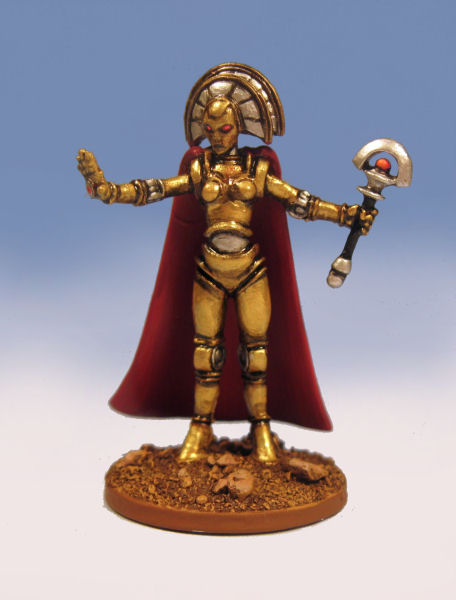 |
| Queen Mechanika | John Winter | Hydra Miniatures |
| Name | M | WS | BS | S | T | W | I | A | Ld | Int | Cl | Wp | Weapon 1 | Weapon 2 | Armour | PV |
| Ru'ún: Bronze Demonesses | 4 | 8 | 8 | 5 | 4 | 3 | 9 | 4 | 12 | 12 | 12 | 12 | Hand Blaster | Powersceptre | Bronze | 72 |
During close combat the Ru'ún makes 2 attacks with its Sceptre, and 2 energy blasts from it's warpstone powered hand-blaster. Attacks from both weapons cause Instability.
| Item | Strength | Initiative | Damage | Save Mod. | Short | Max | To Hit Short | To Hit Long | Area |
| Hand Blaster | 4 | 0 | 1 | -1 | 8 | 16 | +2 | 0 | 0 |
| Item | Strength | Initiative | Damage | Save Mod. |
| Powersceptre | 5 | 0 | 1 | -1 |
While it will obey the posessor of an Incomparable Eye of Command or an Amulet of Ruling the Ru'ún will otherwise ignore all attempts to negotiate, and having not received other instructions proceed , note that the Ru'ún is completely immune to Change Allegiance or other "charm" type spells and all Illusions.
Some Notes on The Aridáni of the Empire of the Petal Throne
Tsolyanu aka "The Empire of the Petal Throne" is one of 5 human empires on the planet Tekumel. It is a deeply "Lawful" society, hugely conservative and deeply structured, it loves ritual, regulation and stability above all else. Most marriages are arranged, and the role of women is largely domestic, or priestly, wheras a mens role can be mercantile, military, or academic - but this is usually bound by Clan obligations. Personal freedom and social mobility are seemingly alien concepts, the Empire of the Petal Throne is a slave-owning culture and whilst the middle-classes may move up or down the ranks of their Clan, the Military or their Temple, due to social schmoosing and valour, nothing opens doors like noble birth.
Any Tsolyani middle-class woman may go before a magistrate and declare herself Aridáni - which is a social status which puts her on completely equal standing with men. In choosing to become Aridáni there is absolutely no loss of face, virtue or womanhood, it is a choice every middle-class Tsolayni female as and is up to the individual and their choice is widely accepted. Clan Elders might be a bit disappointed that some strategic marriage might not have transpired, but ah well...
 |
| Aridáni | Jeff Dee |
Homosexuality and bisexuality are not uncommon, several of the Empresses and Emprors have been non-hetrosexual, and is an entirely acceptable and normal part of human sexual nature, there is nothing transgressive about it at all. As long as it exists in a well defined category, then the Tsolyani are happy with it. Subsequently transgender, androgyny and hermaphroditism would seem to confuse and be frowned upon by the Tsolyani, not that the text goes into much detail - but there are certain alien races on Tekumel which have more or less than 2 genders, which seems to be met with revusion by the Tsolyani. The Tsolyani are not a scientifically curious people, science would be progress, which would be change, which is undesirable. If they managed (or bothered) to codify the various sexual preferences of the non-human races, there's little doubt these things would just be accepted as facts of life.
 |
| Sapphire Kirtle |
It's this love of categorisation and societal structure that creates social institutions such as the all-lesbian Legion of the Sapphire Kirtle. Similarly there are legions of homosexuals (of both genders) and similarly legions of devotes of the same deities of any gender. Notably one of the main enemies of the Petal Throne - the Yan Koryani is entirely Matriarchal and sees homosexuality as counter-productive to society.
 | |
| Dejah Thoris & Calot (?) | Frank Frazetta Witch Elf on Cold One Adriani on small Chlén beast |
Nudity is common in private and among friends. Tekumel is a hot planet, and human are not native to it nor used to the heat. Clothing tends to be highly codified - items having more symbolic meaning than function. Many of the the EPT illustration I've seen do not shy away from portraying the 'shunned-bodies' of the old and portly, the exotic setting isn't purely an excuse to show Dejah Thoris style nubiles, although no doubt there is some of that to it too - there are certainly subject positions within Tekumel which conform to standards set by a patriarchal hegemony, but many many which don't and are treated as normal by the Tsolyani. Any proponents of Queer Theory (which should really grow up and call itself post-structuralist identity formation theory) looking at gaming artefacts out there should take a look.
Works cited:
Empire of the Petal Throne:
Deeds of the Ever Glorious M. A. R. Barker
Empire of the Petal Throne M. A. R. Barker
2nd Citadel Compendium Richard Halliwell
Warhamer Fantasy Battle 2nd Edition.
Any mistakes in Tekumel scholarship are purely my own, and apologies in advance for any idiosyncratic reading of the material.






